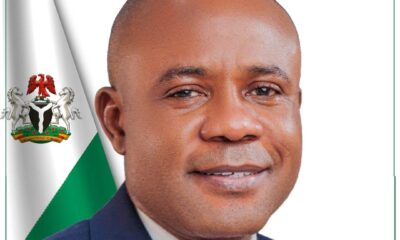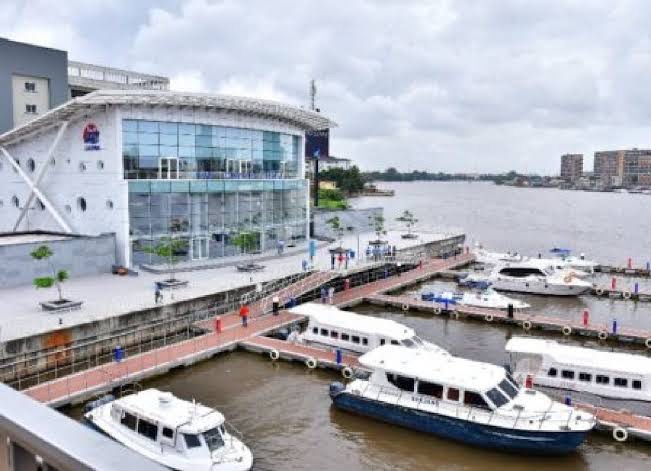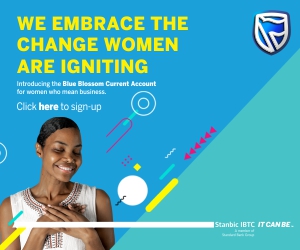GROpinion
[OPINION] Beyond The Protests: Towards A New Future For Nigerian Youths


By Chukwuma Charles Soludo, CFR
For some obvious reasons, I have resisted the pressure to join the fray in the past two weeks. My children, especially my daughter who had been a victim of the harassment and extortion by SARS, were up in solidarity with their colleagues in protesting against police brutality. Peaceful protests and agitation are critical ingredients of a living democracy and should be encouraged. I reflected upon my personal experiences as a student activist in mobilizing peaceful protests against government policies especially during the anti-SAP protests or ASUU/NLC strikes, and prayed that Nigeria should rise up and exploit the opportunity inherent in the current seeming national tragedy. I have been protesting for a better Nigeria since I was 19 years old, and as an activist intellectual protesting against the imposition of structural adjustment programmes on poor African countries, I have published many books and journal articles on how Africans must confidently take their destiny in their hands to secure a prosperous future. Given the enormity of the events of the past weeks, I believe that as a citizen, I have a duty (aside from possible private advisory to the FGN) to share preliminary thoughts on the raging national conversation.
Over the past two weeks, I have watched with heightened trepidations the horrifying videos about the protests on social media and the unfortunate events that unfolded. I have been deeply saddened by the colossal costs in terms of lost lives and properties as well as the humongous blow to an already dreadful economy. Let me extend my deepest condolences to the families of the protesters and the law enforcement agents that lost their lives in the course of these events. We also sympathize with the innocent citizens and businesses whose properties have been destroyed, shops looted, vehicles and houses burnt, etc. Given the poor insurance system, these loses can be permanent with lifetime pains to the victims— most of whom are still the same youths. We condemn violence of any kind as part of democratic agitation or from law enforcement agents. Since my student days, I have always insisted that violence, arson, looting, vandalism or any form of criminality should not be part of civilized protest or conversation.
These events led me to review my public lecture of 1st October, 2019 entitled “Economic and Institutional Restructuring for the Next Nigeria” which in some sense addressed some of the additional issues (beyond the initial five) raised by the protesters. In that lecture I highlighted several of our huge challenges and fault-lines, including the fact that in a few decades, Nigeria is estimated to be home to over 400 million mostly youthful population but without a credible plan for their future, in a post-oil world and the 4th industrial revolution. That future is what I called “the next Nigeria” and called for an emergency “national” rather than narrower federal government response as you can’t clap with one hand. My thesis was that our current foundation cannot secure that future since, as I argued then: “you can’t build a 100 storey-building upon a foundation of an old bungalow”.
As I ponder the events of the past weeks and the future of our youths, I am convinced that this is the time for that deeper and structured national conversation about the future of our youths. Our children and youths constitute the bridge to the future, and their future is the future of Nigeria. Such a structured dialogue under whatever platform (for example: “Commission for the Future of Nigerian Youths”) should be dominated by the youths from the 36 states and FCT at the centre of the table. It could be an ad-hoc or permanent Commission (separate from the ministry of youths and sports) but with defined timelines to deliver results. Let Nigeria lead Africa in this regard by elevating the voice of the citizen to statecraft. We need their alternative blueprint for our future. If they want to suggest their own version of Nigerian constitution, let them do so. It is their future and that of their children that is mostly at stake and so, let’s hear them. That is the beauty of democracy: everyone should be heard. We also need a framework of rapid response to deal with the myriad of reforms and actions to give them hope in that future.
Let me admit that the road ahead is going to be a challenging one, as there will be no easy solutions. Oil has been the main source of government revenue but both output and price have collapsed, and with debt service gulping more than 50% of federal government revenue. In some sense, the FGN is technically insolvent at a time when every sector needs and demands significant increase in wages and government spending. The covid 19 pandemic and heightened economic hardship constitute a tinderbox that can ignite social unrest. A study actually identified Nigeria as one of the countries with possibility of protests resulting from the covid 19 hardships. Managing Nigeria’s transition to a post-oil economy in the context of its tendentious fault-lines and fractured institutions as well as existing objective conditions of high youth unemployment and poverty will require a fundamental reset of the button.
Yes, this FGN has an unprecedented number of social interventions (and even a new ministry of humanitarian affairs). But relative to need (about 40 million unemployed or underemployed, over 10 million almajiris and other children out of school, over 80 million in poverty, and about three million fresh youth entrants into the labour market each year seeking non-existent jobs), these FGN “interventions/palliatives” that at best benefit some hundreds of thousands/few millions might seem a drop in the ocean.
Let the Commission for the Future of Nigerian Youths produce the youths’ agenda for security, jobs, poverty reduction and prosperity, as well as the legal-institutional- governance structure to deliver them. What kind of education and value system will underpin these and how will they emerge, etc? Given the high concentration of poverty in the North East and North West, as well as the spate of insecurity especially banditry, kidnapping, and terrorism, perhaps the youths might give Nigeria the magic wand for the problems. Let’s have their detailed plan for policing in Nigeria or even a template on the size, functions, salaries and allowances of elected office holders, etc. Nigeria will be grateful to have their costed plan: how much will the plan cost and where will the money come from? Among other things, they may come up with better ideas on how to eliminate corruption, drastically reduce cost of governance, and ensure turbo charged productivity across the length and breadth of Nigeria’s economy. Who knows which other disruptive or inventive ideas that they can come up with. States and local governments may also set up their own commissions with similar or broader mandates.
Yes, the initial peaceful protest has largely lost its strategic direction but we must not also respond by labelling the entire episode and dismissing it. The crisis has shown many patriotic youths and we need to harness them into a vanguard for the new or next Nigeria. Every disappointment, they say, is a blessing. In every crisis, there is also an opportunity. Nigeria has missed too many good opportunities in the past, and we must not miss this one. We must commend the initial organizers of the protest against SARS for their patriotic duty which instantly raised national consciousness. We also commend the government for the unprecedented prompt acceptance of the five demands. Let the hard work now begin with transparent implementation, and some of the patriotic youth leaders may be coopted to be part of the implementation.
Finally, each level of government (federal, state, and local government) as well as the parliaments and judiciary should be wise to internalize the lessons of the protests and act decisively. There is still significant room to do more. Lagos State needs special attention. It is a predictable hotbed. During the months of national lockdowns, thousands/millions of petty traders, artisans and other micro and small enterprises consumed their capital, and most are yet to replenish. Social safety nets are miniscule and the dependency burden on the tiny elite has reached elastic limits. Nigeria’s commercial capital, Lagos state (accounting for about 30% of Nigeria’s economy, home to over 20 million Nigerians and its major financial and transport gateway to the world) still operates at half capacity (partial lockdown) due to the pandemic. Millions of the unemployed or underemployed are in Lagos who survive from daily hustle. Any day that Lagos is locked down not only inflicts massive shocks to the national economy’s supply chain, but also wrecks unquantifiable toll on the livelihood of millions.
The Governor of Lagos State has done a great job in managing the covid-19 spread, but it may be time to seriously review the partial lockdown in the state. Given the lessons so far, there may be other creative ways to manage covid-19 spread than continued partial lockdowns. Partial lockdown in Lagos slows down national economic recovery from the pandemic and hence further lockdowns or disruptions in Lagos have become socially and economically too expensive for Nigeria. Other states should also review their operations to eliminate all policy-induced and regulatory bumps on the way to desired economic recovery.
Let the conversation continue!
-



 GRPolitics4 days ago
GRPolitics4 days agoPeaceful Voting Underway in Central African Republic as 2025 General Elections Commence
-



 Politics3 days ago
Politics3 days agoEnugu Group Lauds Mbah’s Superlative Performance, Pledges 2027 Support
-



 News3 days ago
News3 days agoGOCOP Condoles With Freedom Online Publisher on Son’s Death
-



 Culture4 days ago
Culture4 days agoAwka Community Elects Fredrick Chinwuba New President General of Awka Development Union of Nigeria (ADUN)








